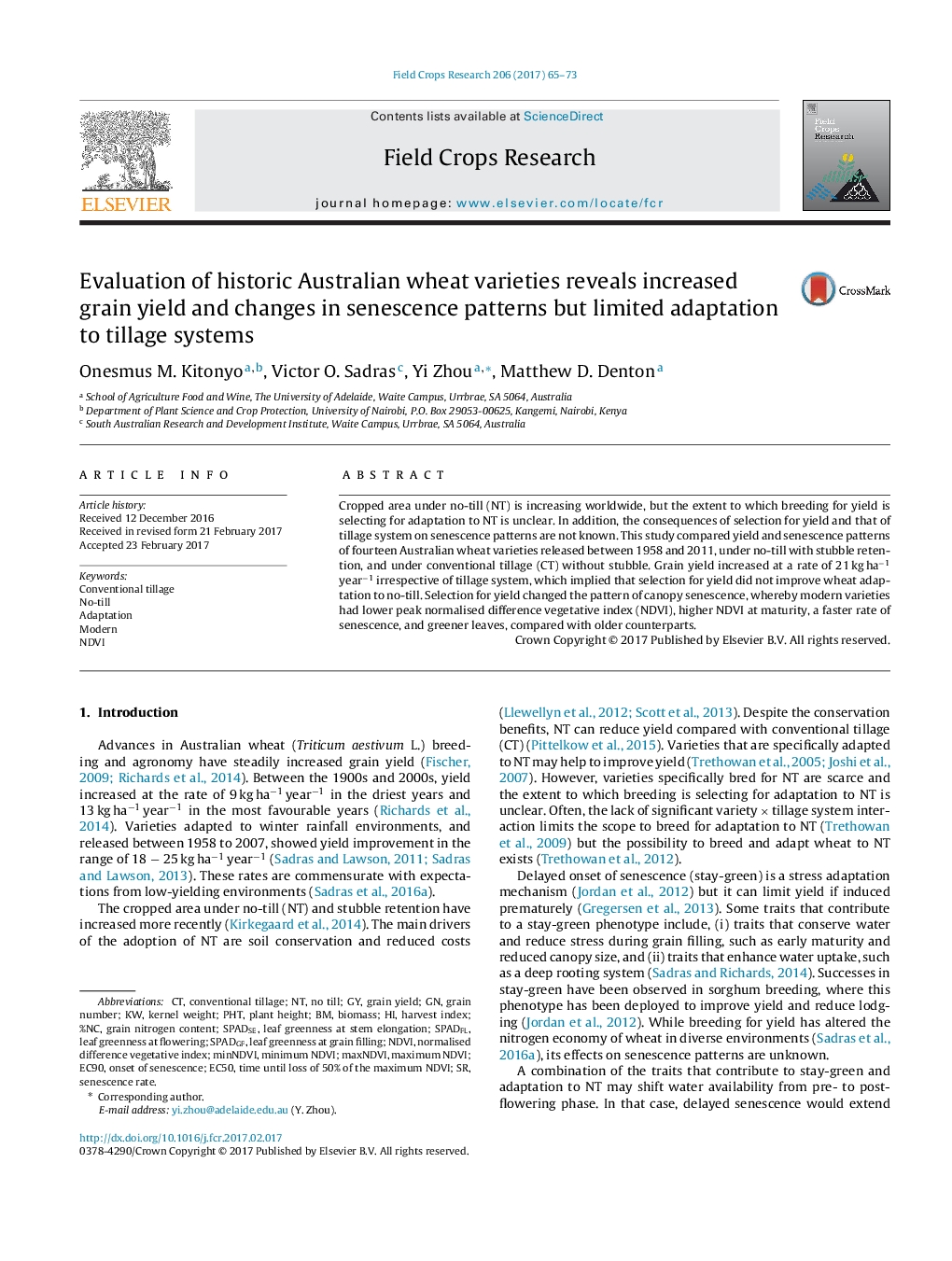| Article ID | Journal | Published Year | Pages | File Type |
|---|---|---|---|---|
| 5761526 | Field Crops Research | 2017 | 9 Pages |
Abstract
Cropped area under no-till (NT) is increasing worldwide, but the extent to which breeding for yield is selecting for adaptation to NT is unclear. In addition, the consequences of selection for yield and that of tillage system on senescence patterns are not known. This study compared yield and senescence patterns of fourteen Australian wheat varieties released between 1958 and 2011, under no-till with stubble retention, and under conventional tillage (CT) without stubble. Grain yield increased at a rate of 21 kg haâ1 yearâ1 irrespective of tillage system, which implied that selection for yield did not improve wheat adaptation to no-till. Selection for yield changed the pattern of canopy senescence, whereby modern varieties had lower peak normalised difference vegetative index (NDVI), higher NDVI at maturity, a faster rate of senescence, and greener leaves, compared with older counterparts.
Keywords
Related Topics
Life Sciences
Agricultural and Biological Sciences
Agronomy and Crop Science
Authors
Onesmus M. Kitonyo, Victor O. Sadras, Yi Zhou, Matthew D. Denton,
